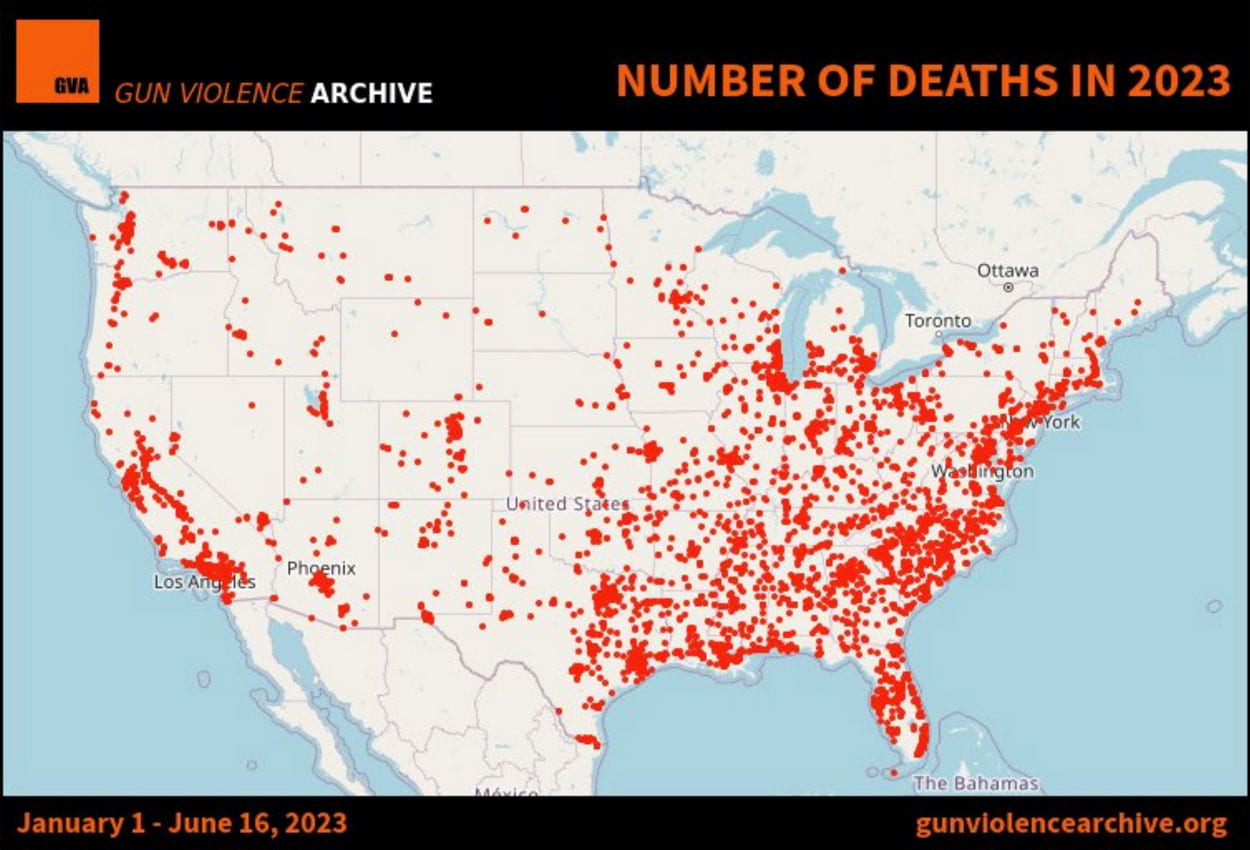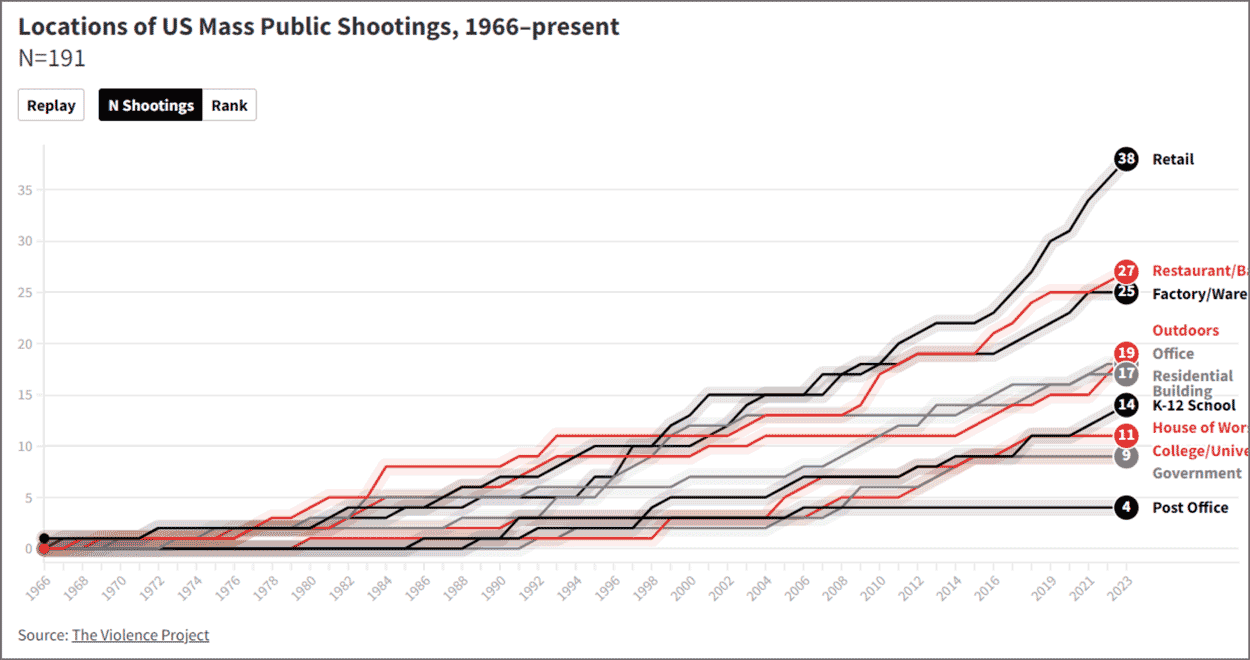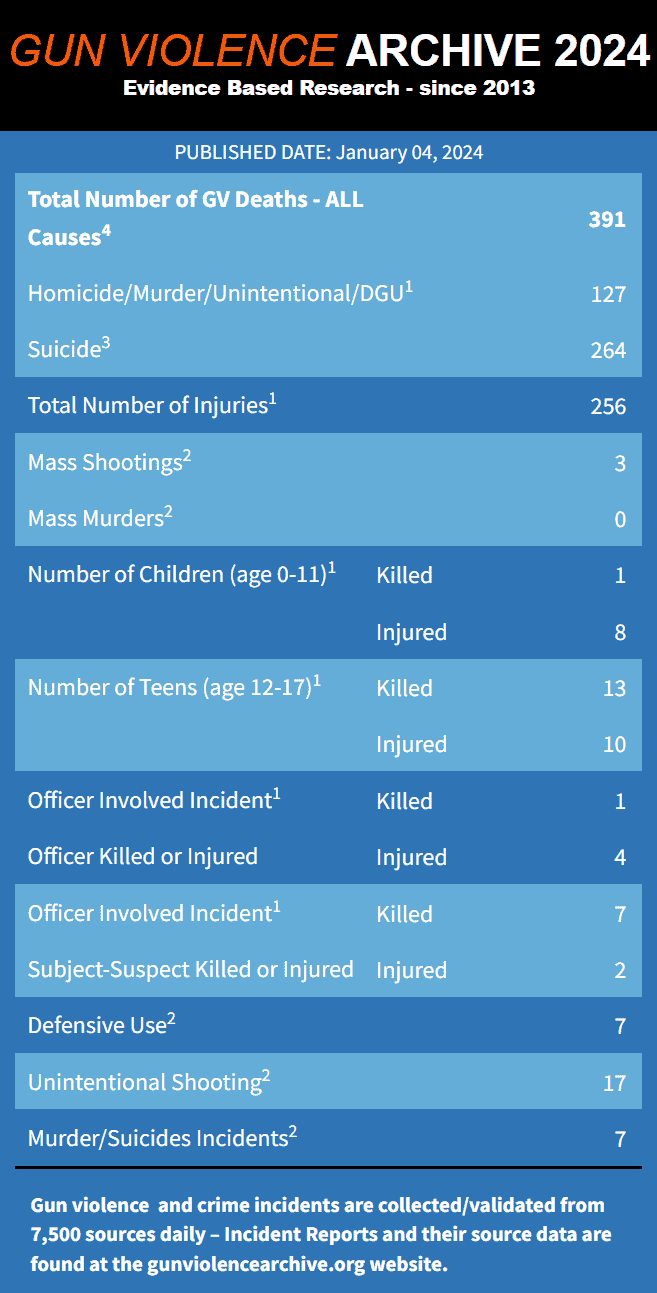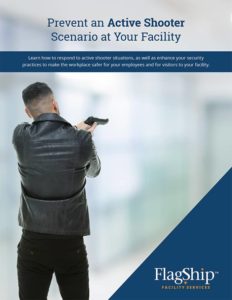Learn how to respond to active shooter situations, as well as enhance your security practices to make the workplace safer for your employees and visitors to your facility.
The United States has witnessed a steady increase in the number of mass shootings over time. Researchers and psychologists continuously strive to understand the triggers that cause a person to carry out a shooting, be they social, psychological, or economic.
These statistics help illustrate the severity of the issue:
- According to the National Safety Council, assaults are the fifth leading cause of work-related deaths.
- Injury Facts recorded 481 fatalities due to work-related assaults in 2021.
- Mass public shootings most frequently occur at places of work, according to The Violence Project.
It is concerning to note that 50% of the 35 most lethal mass shootings in the past 120 years have taken place within the last ten years. According to Gun Violence Archive, there were 646 mass shootings reported in 2022, resulting in more than 38,000 injuries.
The FBI defines an active shooter as an individual actively engaged in killing or attempting to kill people in a populated area. U.S. Congress has defined a mass killing as an incident in which three or more people are killed.
A sad reality many companies face is how to recuperate after a tragedy occurs. But there are ways to prevent and prepare for these fateful active shooter scenarios before they happen. Employees have the right to feel safe at their workplace, and it is up to employers to ensure their protection.

To note, mass shootings are defined as shootings in which four or more people are killed or injured, not counting the perpetrator.
Here are some ways companies and the people who manage them can prevent and prepare for an active shooter on their premises.
How to Prevent & Prepare for Active Shooters
In the same way facility managers prepare for fire evacuations and severe weather, they should plan for an active shooter scenario. This plan should include training employees on how to respond to active shooter situations and actions that can be taken to prevent these situations from occurring.
To help prevent active shooter scenarios, you should:
- Assess Existing Security. Evaluate the facility and its perimeter and search for potential points of weakness. Review existing security measures and determine what can be done to make the facility more secure within and around the building. Consider facility modifications, such as means of egress and ways to secure doors and windows. Ensure that meeting room doors can be secured from the inside. Determine if there is a need to hire more security personnel or install additional security equipment such as cameras, keypads, or sensors.
- Control Access Points. Limit entry access with locked or monitored entryways and a guest reception system that prevents visitors from entering using a pass belonging to another employee. Use separate and unique ID badges for staff and guests. Staff should escort visitors from the entrance to their destinations.
- Keep Operational Areas Off-Limits. Prohibit unauthorized staff and visitors from spaces such as storage rooms, utility closets, and boiler rooms. These locations could be utilized as a space for hiding oneself and illicit contraband in anticipation of a violent assault.
- Update Security Systems Regularly. Physical security technologies such as door alarms, surveillance cameras, security locks, and motion sensors require routine evaluations and updates. Invest in maintaining these systems (including software) to prevent potential attackers from gaining access.
- Establish an Emergency Action Plan. A reliable mass communication plan should be implemented to notify all employees of an emergency, whether using text, email, or an announcement over loudspeakers. Practice drills and evacuations should be conducted regularly.
- OSHA offers tools to help companies develop and implement an Emergency Action Plan.
- Stay Vigilant. During regular walkthroughs, be on the lookout for anything out of place, particularly in terms of people’s behaviors. Encourage employees to notify their supervisor if they notice anything suspicious. These observations may be valuable in identifying security vulnerabilities or employees who could become a threat.
What to Look Out For
In the majority of workplace shootings, the assailant was a current or former employee. The Department of Homeland Security’s Pathway to Violence video provides vital information regarding behavior that assailants often demonstrate before a violent attack. This information should be used to help train staff to recognize potential threats.
Some of the warning signs include:
- Increasingly erratic, unsafe, or aggressive behaviors
- Hostile feelings of injustice or wrongdoing
- Distancing from friends and colleagues
- Changes in performance at work
- Sudden changes in home life or personality

Download Now!
Take the Prevent an Active Shooter Scenario at Your Facility white paper with you! Download a PDF version now.
Download PDFHow to Respond to an Active Shooter Situation
Active shooter incidents often transpire quickly, typically unfolding within a span of 10-15 minutes. Because these fatal incidents are often over before law enforcement arrives on the scene, staff must be equipped to deal with these situations both mentally and physically.
The Department of Homeland Security has issued the following guidance on how employees should react in an active shooter situation:
Run

If there is an accessible escape path, evacuate the premises. Be sure to have an escape route in mind and leave your belongings behind. If you are within sight of the shooter, run in zig-zag patterns. Never take the elevator.
Hide

Find an area out of the shooter’s view, lock the doors, block the entry, and hide. If possible, hide in rooms near the elevator core, as they often have load-bearing walls that bullets cannot penetrate. Remain quiet and silence your cell phone.
Fight

As a last resort, and only if your life is in imminent danger, confront the shooter. Act as aggressively as possible to incapacitate the shooter, throwing nearby items, improvising weapons, and yelling. Commit to your actions.
It is imperative that employees remain cognizant during an active shooter scenario. To help law enforcement or the 911 operator appropriately assess the situation, they should be prepared to provide the following information:
- Location of the shooter
- Number of shooters
- Physical description of the shooter
- Number and type of weapons used
- Number and location of potential victims
Working with Law Enforcement
During an unpredictable and tumultuous situation like an active shooting, it is crucial that employees follow instructions precisely when law enforcement arrives at the scene. Employees should try to stay as calm as possible when working with law enforcement to ensure they get all the information they need to address the situation appropriately.
Law enforcement should be armed and ready to control the situation. They will likely be shouting commands and possibly pushing individuals to the ground for their safety.
To avoid cases of mistaken identity, employees should:
- Put down any items in their hands
- Immediately raise hands and spread fingers
- Keep hands visible at all times
- Avoid making quick movements toward officers
- Avoid pointing and yelling
- Do not stop to ask officers for directions; proceed in the direction from which officers are entering
When developing an emergency preparedness plan and training employees, it is a great idea to coordinate with local law enforcement. They can provide vital information and help staff understand their response tactics. Building a trusting relationship with local law enforcement can potentially save lives.

Download Now!
Take the Prevent an Active Shooter Scenario at Your Facility white paper with you! Download a PDF version now.
Download PDFWorkplace Culture
Many companies have adopted a zero-tolerance policy to combat harassment, violence, and bullying. However, such policies might make employees more reluctant to report issues, since a single violation could cost a coworker their job. Severe policies could also result in litigation or further aggravate an already unbalanced employee.
While no workplace should tolerate harassment, violence, or bullying, employers should focus first on building a culture of awareness, safety, and inclusion. Employees should always feel respected and comfortable communicating any misgivings that occur in the workplace. Promoting a culture of open communication can help prevent these issues from escalating. HR should take any report of harassment seriously and investigate it further.
To develop a healthy workplace culture, companies must prioritize employee mental health and well-being. Unfortunately, most active shooters are under duress and experiencing a mental health crisis. Providing ample mental wellness resources for all employees can help mitigate this issue.
Best Practices when Hiring & Firing
Ensuring that applicants are a suitable match is one way to reduce the likelihood of harassment, violence, or assault. To avoid hiring the wrong people, hiring personnel should follow these best practices:
- Pre-Hire Personality Evaluations. Utilizing an online assessment when screening candidates can help pinpoint individuals who might experience challenges when it comes to working collaboratively and harmoniously with their team.
- Criminal Background Checks. The background check should be comprehensive and include all 50states. It should also include a review of the applicant’s social media accounts, looking for anything that condones violence, bullying, or discrimination.
- Define Company Culture. Clearly defining company culture in the application and reiterating itduring the interview process can help identify compatible candidates.
- Include Current Team Members. Conducting a separate interview with team members the candidate would be working alongside can help determine if they are a good fit.
Terminating employees is a challenging task that requires sensitivity, particularly when dealing with individuals who may have the potential for violence. As the majority of workplace shooters are former or current employees, it is important to handle terminations with extreme care and caution.
- Schedule a Meeting. Choose a precise time and agreed-upon date to meet with the employee privately. Wait until the end of the day to terminate if possible. This minimizes the number of employee son-site should the situation escalate.
- Proceed with Empathy. Showing empathy and prioritizing the employee’s emotional well-being is essential to prevent the situation from escalating. Abrupt or poorly executed terminations can lead to negative emotions such as anger, shame, and despair.
- Mitigate Risks. An employee who exhibits warning signs of violence requires special precautions. Consider using a neutral manager, outside security consultant, or an HR expert to carry out the termination. Notify security personnel of the termination so they can be aware of the situation and be ready to respond if necessary.
- Do Not Take a Break. There have been instances where employees have used bathroom breaks or time away to gather themselves as a ruse to retrieve weapons.
- Clear Communication. Concise communication is key when terminating employees, especially those with a risk of violence. Clearly articulate the reasons for termination without making it personal.
- Emphasize Severance Benefits. Highlight severance benefits and inform them of any outsourced help that may be available. Connect them with valuable resources such as counseling services to help them cope emotionally and navigate their job loss.
- Ongoing Monitoring. After termination, observing the terminated employee’s behavior may be necessary, particularly for those who may retaliate. Monitor their social media accounts and stay vigilant.
Department of Homeland Security Active Shooter Pocket Card
CISA Active Shooter Pocket Card
Download Now!
Take the Prevent an Active Shooter Scenario at Your Facility white paper with you! Download a PDF version now.
Download PDFSubscribe Now!
Stay up to date with the latest facility management tips and news.





